Wire and Signal, both are popular messaging apps with a primary focus on user safety and privacy. Signal has been recommended by none other than Edward Snowden, the popular whistleblower who exposed NSA. But what makes Signal so special and how does it compare with Wire, another app that is making in-roads into the corporate world. Let’s find out.
Also Read: 6 Things You Need Know About Email Encryption
Wire vs Signal: Which one to Choose
1. User Interface
Signal has a decent interface with light and dark themes. There are two buttons at the bottom to create and send text and media messages using the camera. The Note to Self option is visible at the top by default. Tap your name’s initials to access settings and other options. A pretty standard approach that is tried and tested. No learning curve here.
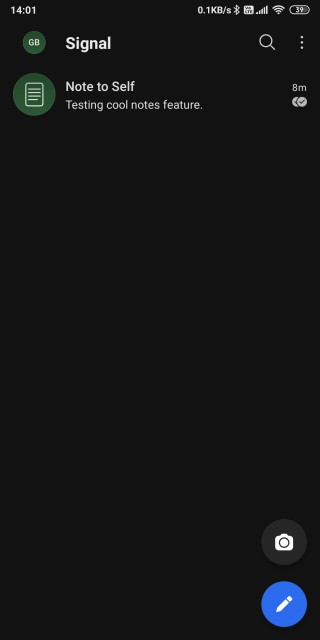
The Wire UI works a little differently and I found it confusing at first. There are four buttons at the bottom. One for creating a group, second for accessing created or joined groups, and the last one is for Archives. The third tab simply shows me groups again for some weird reason.
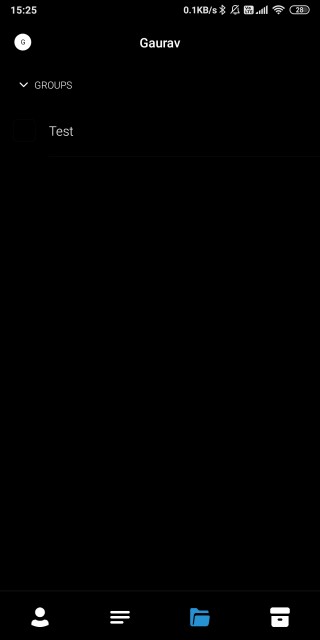
Note that enterprise users may view a slightly different UI. Wire asks you to choose your account when you are using it for the first time. I chose to go with personal.
I like Signal more. It is not trying to reinvent the wheel but offers a simple, intuitive UI.
Also Read: JioMeet vs Zoom Meetings vs Google Meet – Best Meeting App?
2. Communicating and Sharing
In Signal, just tap a name to begin chatting. You can send text messages or make secure audio and video calls. Tap the ‘+’ icon to attach files, images, GIF, contacts, and even share your location. What’s different here is the ability to choose a color for the chat window, giving it a unique look and making it easy to spot in a sea of messages.
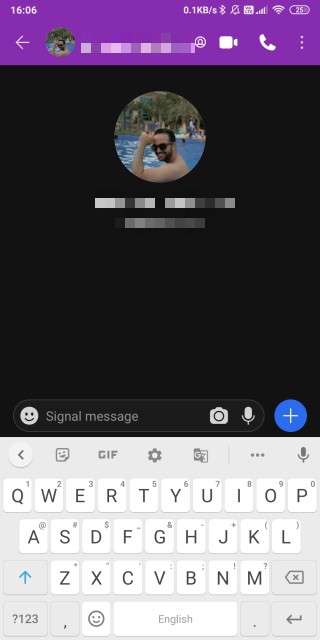
A notable security and privacy feature is Disappearing messages. Select the option from chat window Conversation Settings by tapping the three-dot menu icon. You can choose how soon the message will disappear or self-delete. Options vary from 5 seconds ‘after they have been seen’ to 1 week.
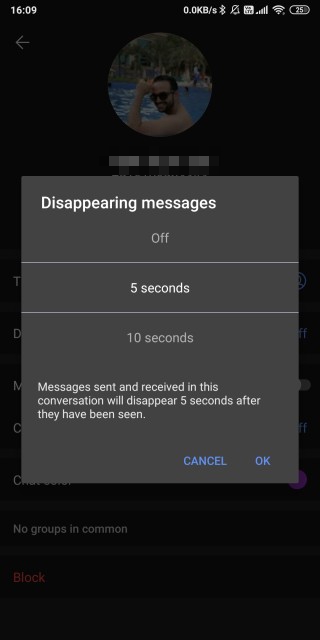
Wire goes a step further and offers way more ways to communicate. It was designed with enterprise users in mind. You can send @name messages in groups to draw attention or ping directly. Something we use in Slack or Teams. Where Signal allows only voice messages, Wire also allows short video messages.
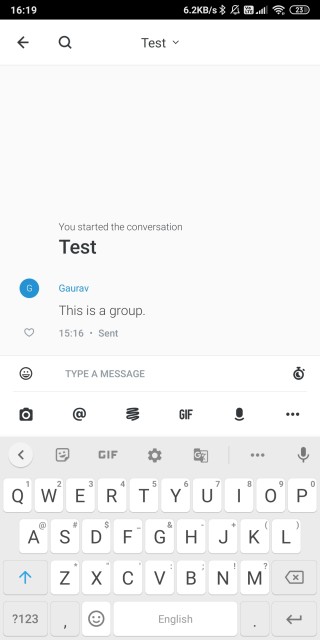
Tap the wavy line icon to draw, write, and add emojis on a drawing board and send it in the group. It makes communicating fun and brings out your creative side.
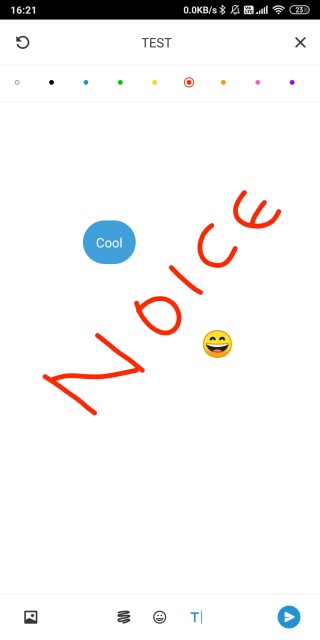
You can also send expiring messages but the difference between timing options is too big. For example, the first option is 10 seconds while the next is directly 5 minutes. Other than that, Wire does a better job offering more useful features like video recording and drawing board among others. You can of course share location and files too.
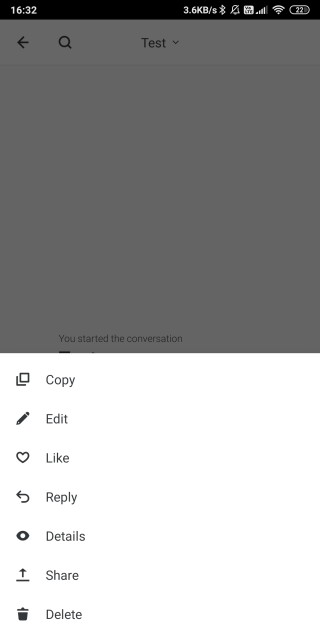
The drawing board can also be used to annotate images. For when you want to draw attention to something important in the image. And then there is a status update to tell others whether you are busy or available. Most casual messaging apps don’t allow this, but Wire will let you edit or even delete a message once it has been sent. Made a typo or hit the send button too quickly? Happens to all of us.
Another cool feature is screen sharing during audio/video calls. Some things are better understood when you see it rather than just read or hear it. Show what’s on your screen. It can be a file, image, or a how-to guide in our case. This is where you can use the drawing board in real-time to showcase your talent. Unfortunately, it works on desktop clients and web only. Mobile apps are not supported at the moment.
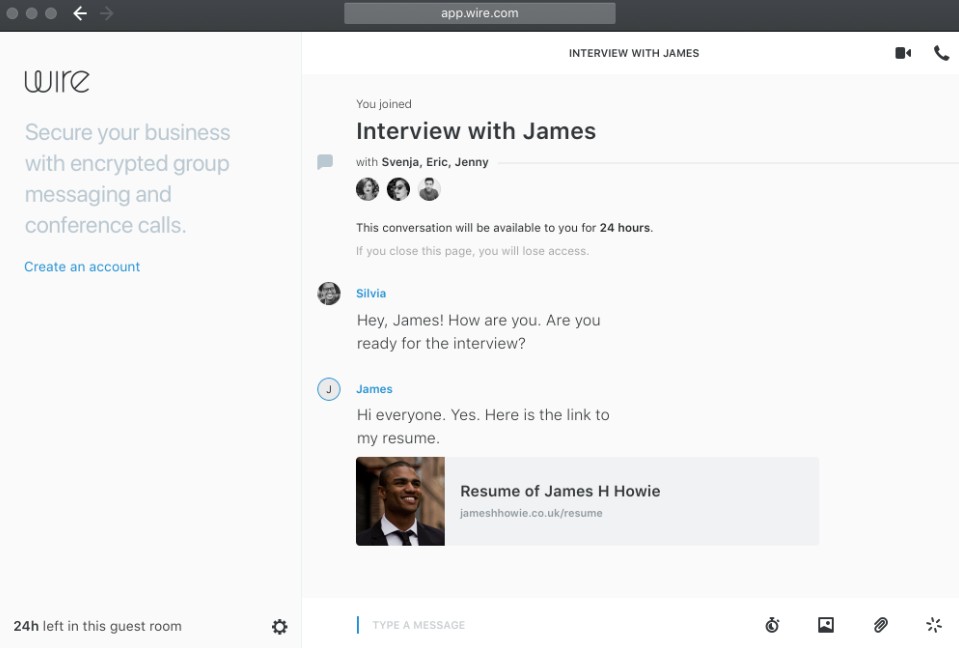
The last but not the least is the guest access feature. Again, designed for enterprise users, guest access can help you bring in contractors who are temporary in nature. You can give them limited access to the group and once the job is done, remove them safely. Coupled with timed messages, you will leave no trace of the conversation, if required.
Wire seems to be a cross between WhatsApp and Slack where you can not only communicate personally but also professionally.
3. Privacy and Security
This is it. This is their primary selling point. The one thing that makes them stand out from the crowd of Slacks, Teams, and Telegrams of the world. Privacy and security are built-in the very fabric of both Signal and Wire. These are not options that you have to find and toggle on. No. They are on by default and you don’t have to do anything to enable them. In fact, there is no way to disable them either. It’s just the way these apps were built and function.
All calls, messages, and even attachments that you send are end-to-end encrypted. And none of it is saved on their servers. No one, not even Signal or Wire, can access these messages or files or calls. Even if someone does access or intercepts them somehow, all they will see or hear is gibberish because of strong security protocols that are implemented from the get-go.
What you need to remember is that Signal requires your phone number in order to create an account and is based in the US. Wire, on the other hand, is based in Germany and Switzerland and allows creating an account using both number or email ID.
Signal is open-source and peer-reviewed which means the code is safe. The organization is a not-for-profit one and is supported entirely by grants and donations. No wonder privacy advocates like Jack Dorsey (Twitter) and Edward Snowden (NSA whistleblower) recommend Signal to all their followers.
Also Read: 10 Best USB Encryption Software to Lock Your Flash Drive (2019)
Same goes for Wire with one difference. Wire is for-profit and built with enterprise and business users in mind. It is scalable with some advanced features that we discussed above meant for power and business users. But the code is still open-source and everything is strongly encrypted.
There are no ads in either app because they neither collect data nor talk/share it with advertisers. And there are no trackers whatsoever. In the case of Wire, you have the option to deploy their customized solution on their cloud, your cloud, or even on-premise–giving you more control over your data and organization. Wire will use a new encryption key every time you send a message reducing the risks associated with compromised keys.
I would encourage you to go through their repository on GitHub and read more about the steps they take to ensure security and privacy.
4. Pricing and Platforms
Signal is completely free with no strings attached. You can use it on Android, iOS, Windows, macOS, and Linux. There is no web app though I am not sure what that’s the case.
Wire is for-profit with plans in place for businesses. The Pro plan begins at $5.83 per user per month. It is suitable for teams looking for a scalable solution for their small or large business. The enterprise plan will cost you $9.5 per user per month. It is meant for government orgs, compliance protocols, and regulated industries. They also offer a special Red plan. Talk to them if you are unsure of what to choose.
Wire is available on all platforms Signal is including a web app.
Wire vs Signal
Signal is more suitable for regular people and individuals working at all levels who are simply looking to replace their regular messaging app with something more secure and private. Wire is more suitable for enterprise and business users are who are willing to pay to get premium support, enterprise solutions that are scalable, and more control over how things work. Not for daily users. Some people may prefer to use both to divide their personal and professional lives.